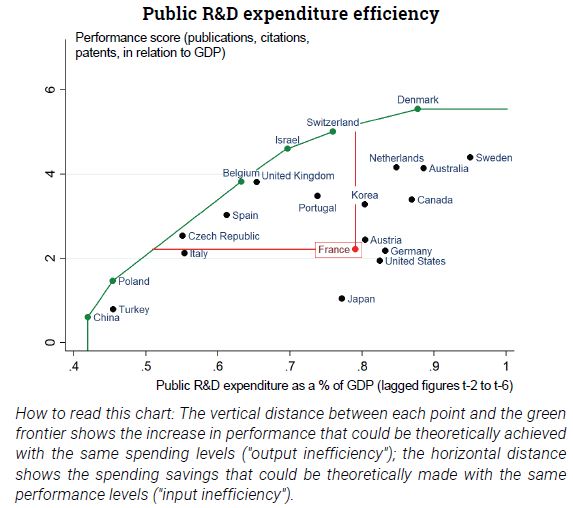Trésor-Economics No. 219 - The efficiency of the French public research system
In 2015, France was in fifth place amongst major OECD countries for public R&D spending. Including defence-related R&D, this spending accounted for 0.86% of GDP, putting France above the OECD average but leaving it trailing the leading pack (Nordic countries, South Korea and Germany) and below the Lisbon Strategy target of 1% of GDP.
Specific features characterise the organisational structure and governance of the French research system. The system has been set up around research centres, such as the National Centre for Scientific Research (CNRS), whereas higher education occupies centre stage in other countries. Today, laboratories are often jointly managed- with many having a number of supervisory entities. In addition, resources mainly comprise recurrent (rather than contractual) budgetary appropriations and the amount of project-based funding appears to be the lowest among benchmark countries.
French scientific output extends to all fields and is resolutely international. Outcome indicators (which have limitations) point to the French scientific production being comparable with the average of other advanced countries. France is in seventh place in terms of publication volumes, the quality of which (gauged by the number of citations) is also within the average. The field profile of these publications is evolving at the same pace as the global average. Lastly, increasing numbers of patent applications are being made on the back of French public research.
France is below the "efficiency frontier" of public R&D spending, which can be estimated by setting expenditure levels against outcome indicators from a set of benchmark countries. In this respect, it does not differ significantly from the average of second-tier nations which include Germany and Japan. The situation has been improving since 2004, thus demonstrating positive momentum.
